
Yongin is a city in the Seoul Capital Area, the largest in Gyeonggi Province, South Korea. With a population over 1 million, the city has developed rapidly since the 21st century, recording the highest population growth of any city in the country. Yongin is home to Everland and Caribbean Bay, South Korea's most popular amusement and water parks. The city is also home to the Korean Folk Village, the largest of its kind. Yongin-si is a multi-nuclear city with multiple urban centers, not a single nuclear structure, and Giheung-gu crosses the Yeongdong Expressway and Dongbaek, while Suji-gu crosses Pungdeokcheon Stream and Jukjeon.

The Shinbundang Line Korean: 신분당선; Hanja: 新盆唐線; literally, New Bundang Line) or DX Line for Dynamic Express Line is a 33.4 km (20.8 mi) long line of the Seoul Metropolitan Subway. It is the world's fifth subway to run completely driverless and the second completely driverless metro line to open in South Korea, after Busan Subway Line 4. It connects Sinsa station and Gwanggyo station in 42 minutes, a feat achieved by being the first line to operate South Korea's next-generation subway car travelling at over 90 km/h (56 mph), with the fastest average speed of any subway line in the country.
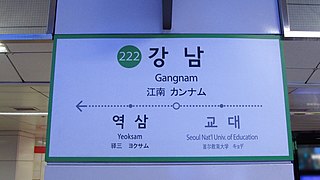
Gangnam is a station on Line 2 of the Seoul Metropolitan Subway. The station is located within the Greater Gangnam Area between the Gangnam and Seocho Districts of Seoul, South Korea. The station is the busiest station on the Seoul Metropolitan Subway, serving over 70,000 daily passengers on average.

Yangjae Station is a station on the Seoul Subway Line 3 and Shinbundang Line. It was the southern terminus of Line 3 until October 30, 1993, when the line was extended to Suseo station, and it became a transfer station with the Shinbundang Line on October 28, 2011. It is located in Yangjae-dong, Seocho and Gangnam District, Seoul.

Sinsa station is a station on the Seoul Subway Line 3 and the Shinbundang Line. It is located in Sinsa-dong, Gangnam-gu and Jamwon-dong, Seocho-gu, Seoul. It will serve as the northern terminus of the Wirye–Sinsa Line when it is opened in 2025.
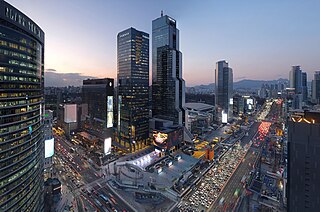
Gangnam District is one of the 25 districts of Seoul, South Korea. The term Gangnam translates to "South of the [Han] River". Gangnam District is the third largest district in Seoul, with an area of 39.5 km2 (15.3 sq mi). As of the 2024 census, Gangnam District had a population of 556,570. There is a high concentration of wealth in the district, with prices for an apartment as of 2024 more than double those in the rest of Seoul. Gangnam District is part of Gangnam School District Eight, along with the Seocho District. This district shares half of Gangnam-daero Gangnam Station area with Seocho District, which is one of the most crowded places in South Korea.
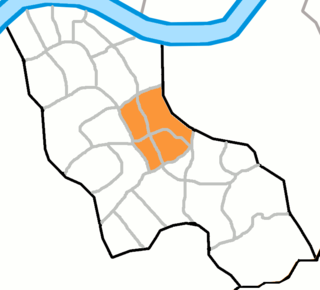
Daechi-dong (Korean: 대치동) is an affluent neighborhood in Gangnam District, Seoul, South Korea. Daechi-dong is divided into three different "dongs" which are Daechi 1-dong, 2-dong, and 4-dong. Daechi-dong is predominantly considered the residential area of Gangnam. As a result, real estate in the area is highly competitive and expensive compared to other parts of Gangnam. The Yangjaecheon is a stream that runs through the heart of Daechi-dong.

Seocho District is one of the 25 local government districts which make up the city of Seoul, South Korea. Seocho is a part of the Gangnam region, along with the Gangnam district of Seoul. Seocho District ranks as one of the richest neighborhoods in South Korea and among the most expensive areas in Seoul with an average sales price of 47.75 million South Korean won per 3.3 square meters. Many of the wealthiest residents are concentrated in the three Gangnam districts including Seocho, known as Gangnam School District Eight.

Seongdong District (Seongdong-gu) is one of the 25 gu which make up the city of Seoul, South Korea. It is situated on the north bank of the Han River. It is divided into 20 dong (neighbourhoods).

Gwangjin District is one of the 25 districts of Seoul, South Korea. It is located on the north bank of the Han River on the eastern end of Seoul. The district was split from the neighboring Seongdong District in 1995.

Seocho-dong is a dong, or neighborhood of the greater Gangnam area Seocho-gu district of the South Korean city of Seoul. Seocho-dong is divided into 4 different dong which are Seocho 1-dong, 2-dong, 3-dong and 4-dong. The main street is Teheranno. There is Gangnam Station in Seocho-dong, which is one of the biggest stations in Korea.

Bangbae-dong is a dong, or neighbourhood of the greater Gangnam area Seocho District district of the South Korean city of Seoul. Bangbae-dong is divided into 5 different dongs which are Bangbaebon-dong, Bangbae 1-dong, 2-dong, 3-dong and 4-dong. The origin of Bangbae-dong is derived from the name Bangbae, meaning "dong-ri with my back to Mt. Myeon-ri," which rises on the border between Gwanak District and Seocho District. Bangbae-dong was Bangbae-ri, Sangbuk-myeon, Gwacheon-gun, Gyeonggi-do until the end of the Joseon Dynasty, but became Bangbae-ri, Sindong-myeon, Siheung-gun, Gyeonggi-do in 1914 when the area was confirmed during the Japanese colonial period. It was incorporated into the Seoul Metropolitan Government following the expansion of the Seoul Metropolitan Government's zone in 1963, and became Bangbae-dong to this day. The location is Dong at the western end of Seocho District, and it is an area from the intersection of the road from Seoul to Gwacheon City and the southern circulation road to Umyeon Mountain.

Dogok-dong is an affluent ward of Gangnam District, Seoul, South Korea. It is home to high-end residential homes including the Samsung Tower Palace, a luxury residential complex which contains the eleventh-tallest building in South Korea.

Samseong-Dong is an affluent neighborhood or ward of Gangnam-gu in Seoul, South Korea.

Jamwon-dong is a dong, neighbourhood of the greater Gangnam area Seocho-gu in Seoul, South Korea. Until 1988, Jamwon-dong was under the jurisdiction of Gangnam-gu. Jamwon-dong is popular for its mulberry trees and silkworms, whose cocoon is used to make fabric for clothing. As a legal-status neighborhood, Jamwon-dong includes Banpo 3-dong and Jamwon-dong.

Banpo-dong is a dong, neighborhood of Seocho District, the greater Gangnam area in Seoul, South Korea. Banpo-dong is divided into five different dong which are Banpobon-dong, Banpo 1-dong, 2-dong, 3-dong and 4-dong.
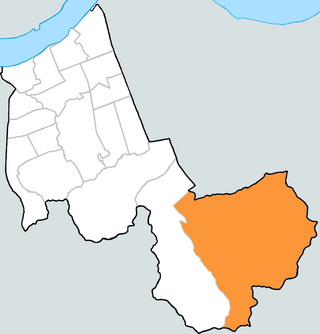
Naegok-dong is a dong, neighbourhood of Seocho-gu in Seoul, South Korea.
Umyeon-dong is a dong, neighbourhood of Seocho-gu in Seoul, South Korea is part of Gangnam District and a well-known, private neighborhood for the wealthy in southern Seoul. It is a legal dong (법정동) administered under its administrative dong (행정동), Yangjae 1-dong. The first syllable of the name is derived from Umyeonsan, or Mt. Umyeon due to the geographical feature of the area has the mountain.
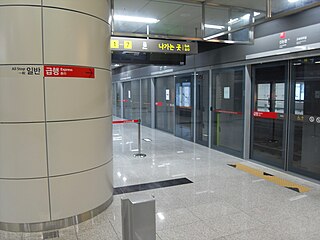
Sinnonhyeon Station is a railway station on Line 9 and the Shinbundang Line of the Seoul Metropolitan Subway, located by the Kyobo Tower sageori in Seocho District and Nonhyeon-dong, Gangnam District, Seoul. It was the southern terminus of Line 9 from 2009 to March 2015, when the line was extended to Sports Complex station. Gangnam Station and Nonhyeon Station are near here. It became a transfer station to the Shinbundang Line on May 28, 2022.
Seoul Yangjae High School is a public high school located in Gangnam School District Eight, Seocho-dong, Seocho-gu, Seoul, Korea. This school is directly managed by Gangnam Education Office of the Government of South Korea. The Korean meaning of the school name means qualified student (良才·Yangjae). YHS is K-wave star Lee Jong-suk's alma mater and this is school chosen by many aspiring Korean top-tier students or entertainers living in the Gangnam area. The number of students per grade at Yangjae High School is about 300, around 20 percent of YHS students enter to Seoul National University, Korea University, and Yonsei University (SKY) annually. YHS campus is connected to the National Diplomatic Academy of Korea (국립외교원) and Seocho District Government Office (서초구청). Yangjae Station of Gangnam Seocho District is located right next to YHS.



















